When I was little, the taste of bicycle tours with my father is still on my palate. All the children in the neighborhood would gather on the street with our bicycles, pedal for hours, discovering our own little world in a way. I vividly remember the day we chose my first bicycle: when we entered the store and came face to face with colorful models, I couldn’t contain my excitement. Deciding which one to get wasn’t easy at all. While my father focused on the technical aspects saying, “As long as it’s safe, the rest doesn’t matter,” I was, of course, only interested in the color and a cool basket at that time. Later I understood that for a child, appearance is paramount, while for a parent, safety and quality come first. Now as a mother, going through a similar process with my daughter, I experience that old excitement with the same warmth. Seeing her face light up when looking at the colorful bicycles in the store, saying “I like the pink one the most!” – all of these remind me of my childhood. But this time, I’m aware of the importance of many details in the background, such as which size is appropriate, the quality of the brakes, and helmet standards.
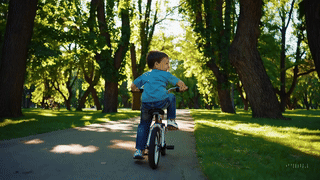
As you know, summer is around the corner. As the weather starts to warm up, there are few activities as enjoyable as children pedaling on the street, in the park, or on bike paths near your home. If you’ve been thinking about buying a new bicycle for your child for a while, or if you have such an intention for the first time, you probably have dozens of questions in mind. More importantly, it’s not just a matter of “Which color bicycle?” You need to consider many points from safety to age-appropriate sizing, from material quality to budget planning. In this article, I want to provide you with a guide based on my own experiences and expert opinions. My goal is to clarify all the question marks you may face when choosing a bicycle for your child and to make you feel comfortable in this process.
Below, you’ll find information on a wide range of topics, from the contribution of bicycles to child development to which type of bicycle should be chosen at what age, from safety equipment to maintenance tips. I’ll also share little details, from funny moments I experienced while shopping for a bicycle with my daughter to important notes I read in expert advice. I hope this guide makes a nice contribution to the bicycle excitement of you and your child. Let’s begin.
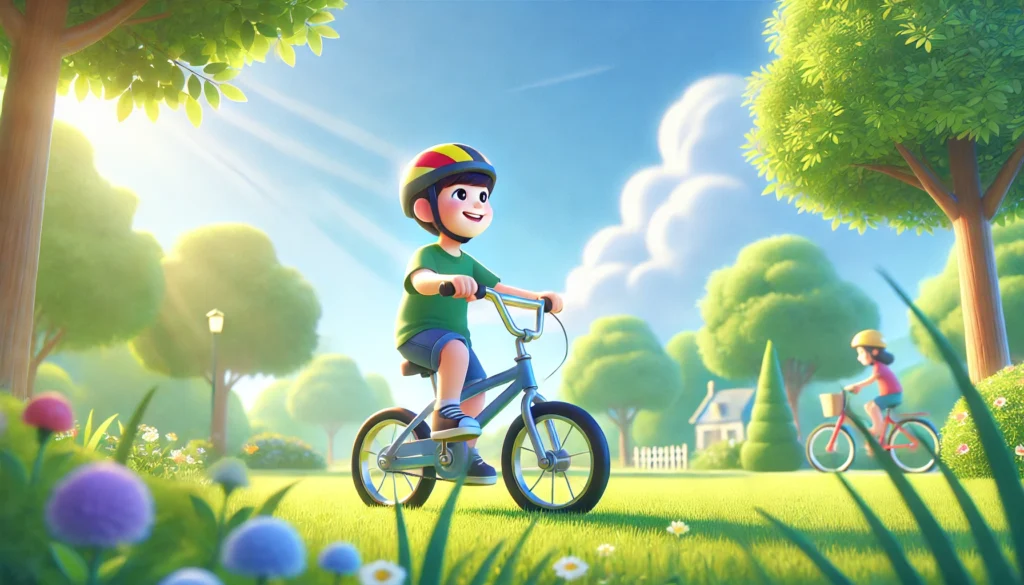
THE IMPORTANCE OF BICYCLES IN CHILD DEVELOPMENT
When we think of bicycles, perhaps what comes to mind is feeling the wind freely, touring, or the races we had in the neighborhood as children. But looking at the developmental aspect, the physical and cognitive benefits of bicycles are remarkably significant. It’s a valuable tool for children in terms of balance skills, coordination, and muscle development. Especially in preschool periods, even a simple pedaling movement supports the synchronized work of legs and arms. I’m sure you’ve been amazed when watching a small child trying to pedal with such concentration. In fact, body coordination requires a strong collaboration between the brain and muscles. This collaboration has positive long-term effects on the child’s cognitive development as well.
Of course, it not only nourishes physical skills but also the feeling of self-confidence. In an article I recently read in the International Journal of Child Development, it was emphasized that the pride and happiness children experience when they accomplish something new, such as starting to ride a bicycle, also makes significant contributions to their emotional development. Think about it, when a little one who previously didn’t know how to pedal learns to balance on two wheels, their perception of themselves changes. The feeling of “I can do this, so I can accomplish many things!” comes into play. This feeling becomes a source of motivation in other areas later on.
Social interaction and sociability are another aspect of the matter. While pedaling in the park or your garden, they meet new friends and share new experiences. They show each other their bicycles, maybe have small “who will go faster?” races. Such interactions strengthen children’s communication skills. So, a bicycle is a tool that leaves a mark on children’s future not only physically but also emotionally and socially.
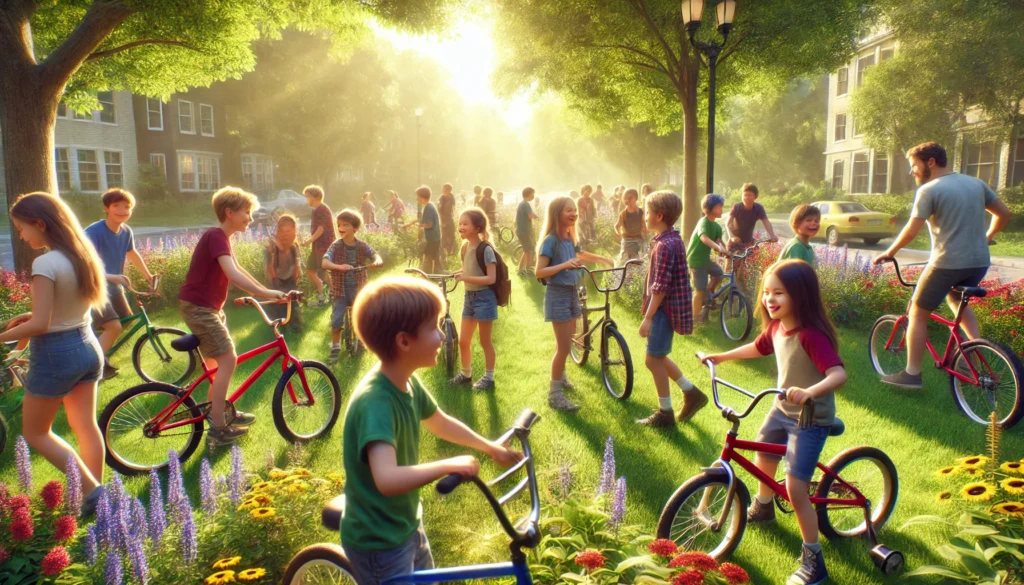
BICYCLE SELECTION BY AGE
Ignoring criteria such as age or height when choosing a bicycle can risk both the child’s comfort and safety. Although children usually say, “Get me the biggest bicycle, it’s cooler!” it’s beneficial to consider age-appropriate sizes. So which bicycle is more suitable for which age group?
Ages 2-4: Balance Bikes or Models with Training Wheels
For children between two and four years of age, the most popular choice is balance bikes, which have become increasingly common in recent years. These pedal-less models help the child learn to balance by pushing themselves with their feet. They first learn to balance, and then the transition to a bicycle with pedals becomes much easier. When I first saw a balance bike, I was surprised, thinking, “Can there be a bicycle without pedals?” But after my daughter used it for a while and then switched to a regular bicycle, she started pedaling almost without any difficulty.
Of course, some parents also prefer models with training wheels, using the classic method. Training wheels reduce the child’s fear of falling while allowing them to learn to pedal. However, most experts state that balance bikes help children gain balance skills earlier and more firmly. Naturally, at this stage, it’s important to choose a saddle height appropriate for the child’s height. A bicycle where their feet can comfortably touch the ground and where they feel safe increases the enjoyment of riding.
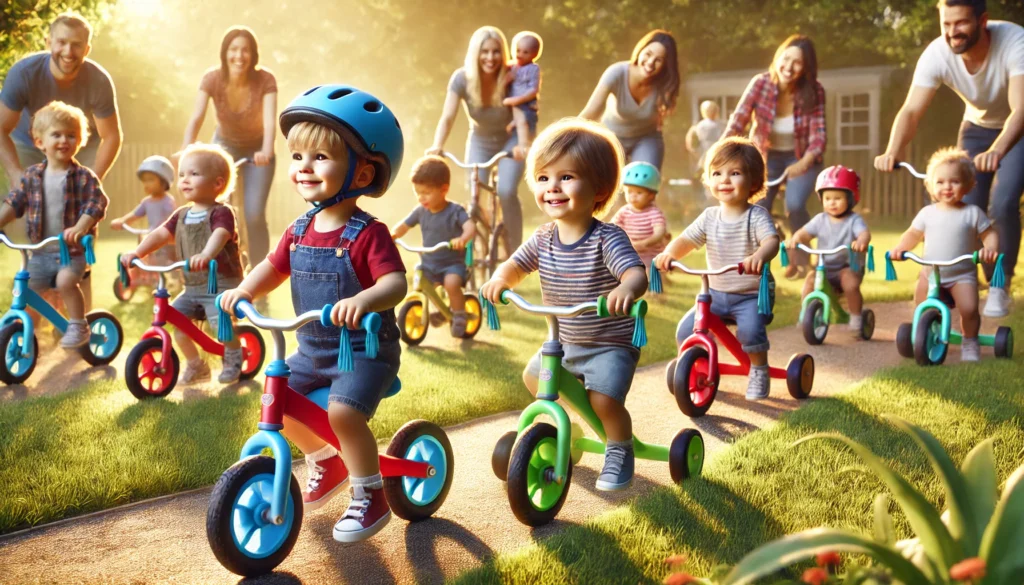
Ages 4-7: Small Frame, Lightweight, and Single-Speed Bicycles
In this age range, bicycles with 12″ or 14″ wheels, lightweight frames, and sometimes single-speed stand out. Training wheels can still be used, but children who have transitioned from balance bikes usually can learn without needing them. Paying attention to the child’s height is very important during this period. Because children grow rapidly at these ages, and a bicycle you bought a year ago might become too small the next year. Therefore, looking at models where the saddle and handlebar adjustments can be made within a wide range will make your job easier.
Also, as these ages are periods when children’s social interactions increase considerably, the color and design of the bicycle can become important in terms of “being cool in the friend circle.” It’s now much more possible to find a bicycle with your child’s favorite character or favorite color. Manufacturers offer quite colorful and fun designs for this age group.
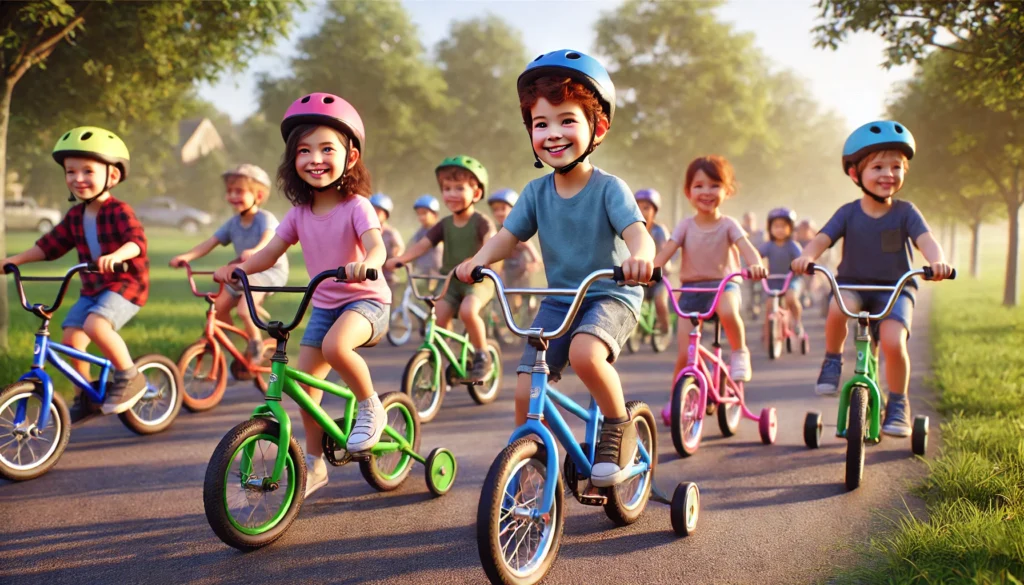
Ages 7-10: Larger Diameter Wheels and First Gear Experience
During this period, there is usually a transition to 16″ or 20″ wheels. Children can now see the bicycle as a means of transportation, meaning they want not just to tour around the door, but to go to and from their friends’ houses or have mini adventures on small tracks. Some models begin to feature gear options ranging from 3 to 7. While a geared bicycle makes riding easier, especially in hilly environments, learning to use it can take some time. During the first gear experience, you might need to give the child small lessons like “which gear to shift to on which slope.”
Children in this age group may also have an urge to speed up while exploring with their friends. Therefore, the quality of the brakes becomes even more important here. Different types are available, such as V-brakes or disc brakes; whichever it is, being safe and easy to squeeze is critical for children not to lose control.
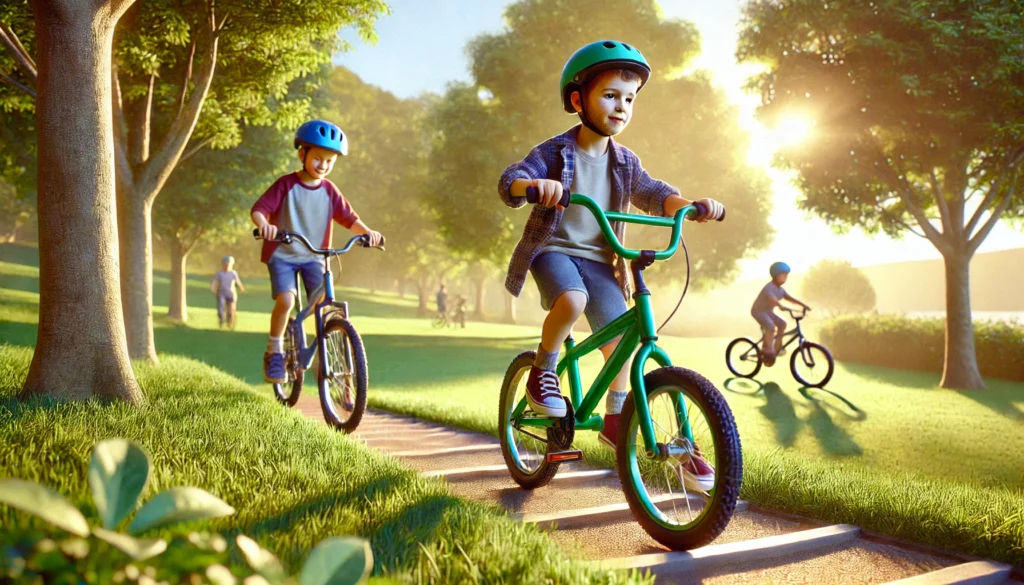
Ages 10-13: Mountain Bike, City Bike, or Hybrid Options
From the age of ten, children begin to shift from the “children’s bicycle” category to more general models. 24″ wheel size is common in this range. Mountain bike (MTB) models can offer off-road fun with front suspension and thick-tread tires. City bicycles, on the other hand, provide a more comfortable and faster ride on asphalt roads with their thin tires. Hybrid bicycles, as the name suggests, are an intermediate model that can be used on both city and relatively rough roads.
For children in this age group, there may be strong desires like “My bicycle is too small for me” or “Let’s move to something more professional.” Here, details such as how frequently the child rides, in what environments they will ride, and even whether they will use the bicycle to go to and from school come into play. For frequent and long-distance uses, it makes sense to opt for slightly more durable and better-quality models.
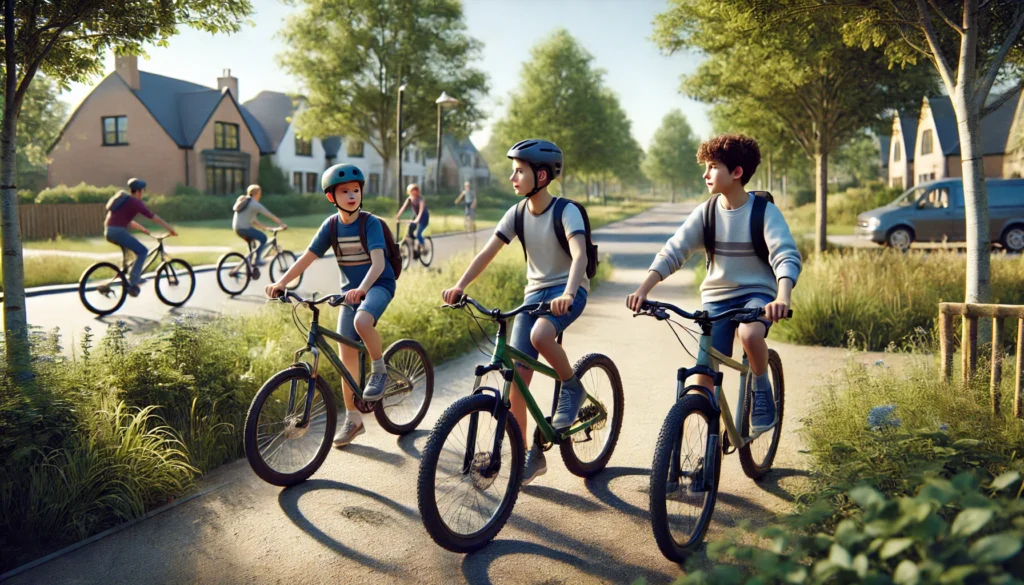
DECIDING ON THE TYPE OF BICYCLE
One of the most confusing issues when buying a bicycle for children is which type of bicycle is more suitable. There are many varieties in the two-wheel world: balance bikes, mountain bikes, BMX, city bikes, folding bikes… So which one should be chosen in which situation?
Balance Bikes
The most frequently recommended option for the 2-4 age group. No pedals, brakes in some but not in others. The child develops their balance by pushing with their feet. After thoroughly mastering walking and balancing with this bike, transitioning to a model with pedals becomes relatively easy.
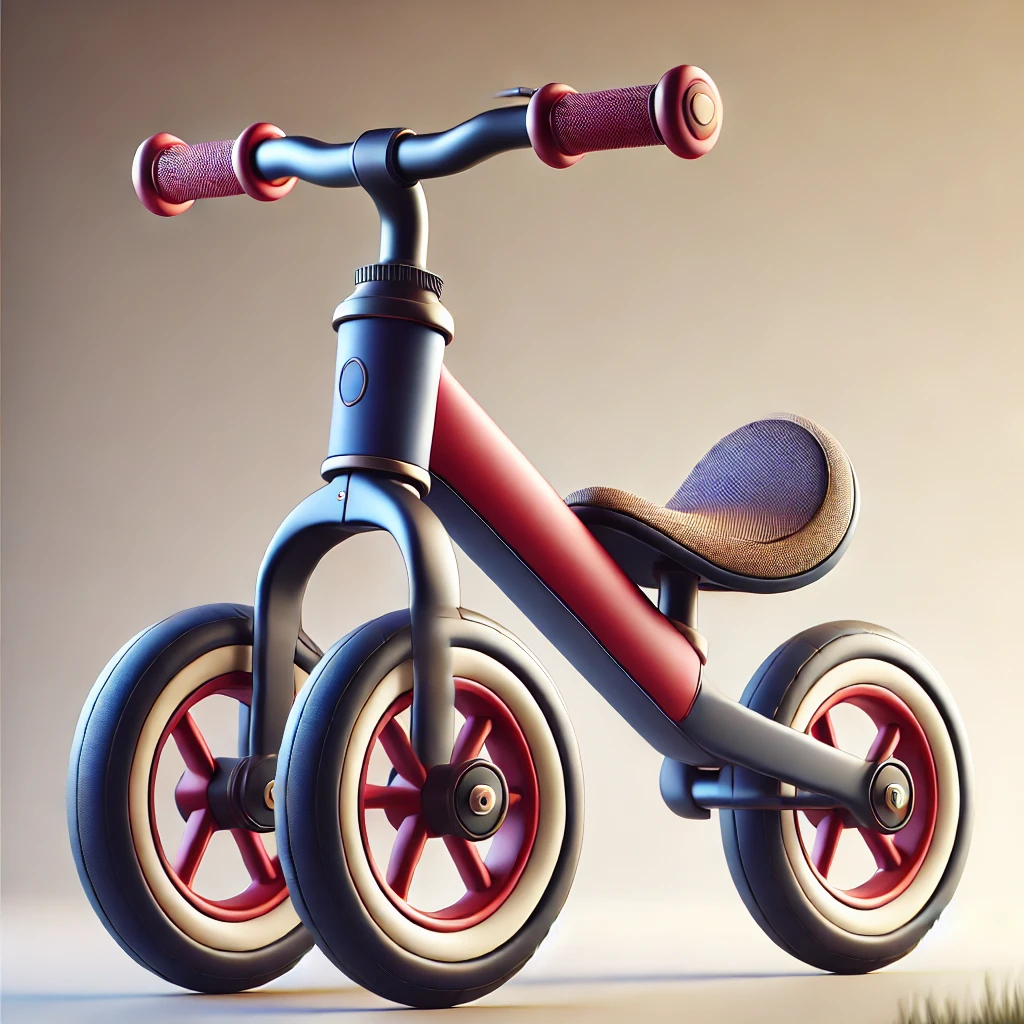
The duration of balance bike use varies from child to child; some may be ready for a pedal model in six months, while others may enjoy using a balance bike for more than a year.
Mountain Bikes (MTB)
Generally considered a category for children 10 years and older or younger teens. Thick tires, suspension, and a durable frame make mountain bikes suitable for use on dirt roads or rough terrain.
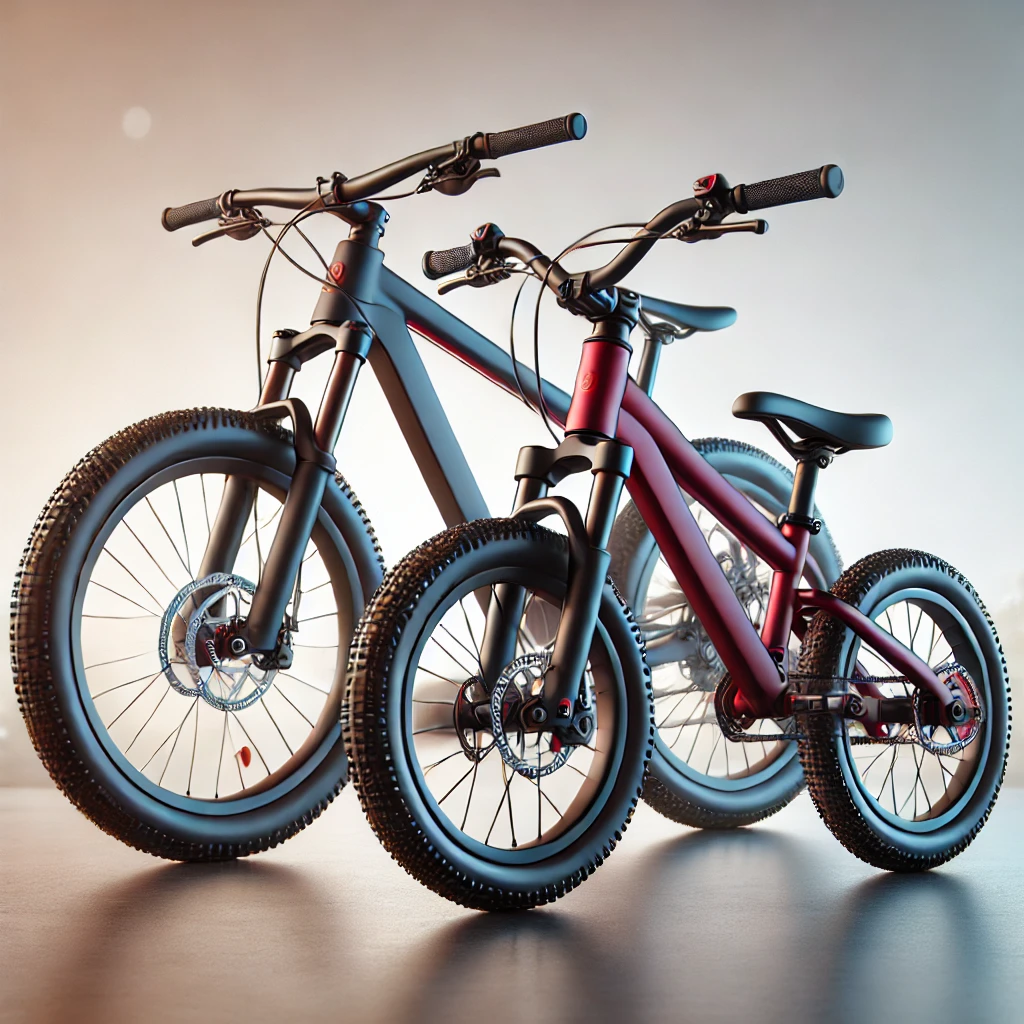
If there are mountainous roads, forest trails, or stabilized roads around where you live, this type of model can nurture your child’s sense of adventure. However, if you will only be using it on flat asphalt, a mountain bike might feel a bit heavy and cumbersome.
BMX / Touring / City Bikes
When we think of BMX, acrobatic moves and shows on ramps come to mind. If your child doesn’t have such an interest, buying a BMX just because it “looks cool” might not be satisfying in the long run. Still, these models can be very fun for some children.
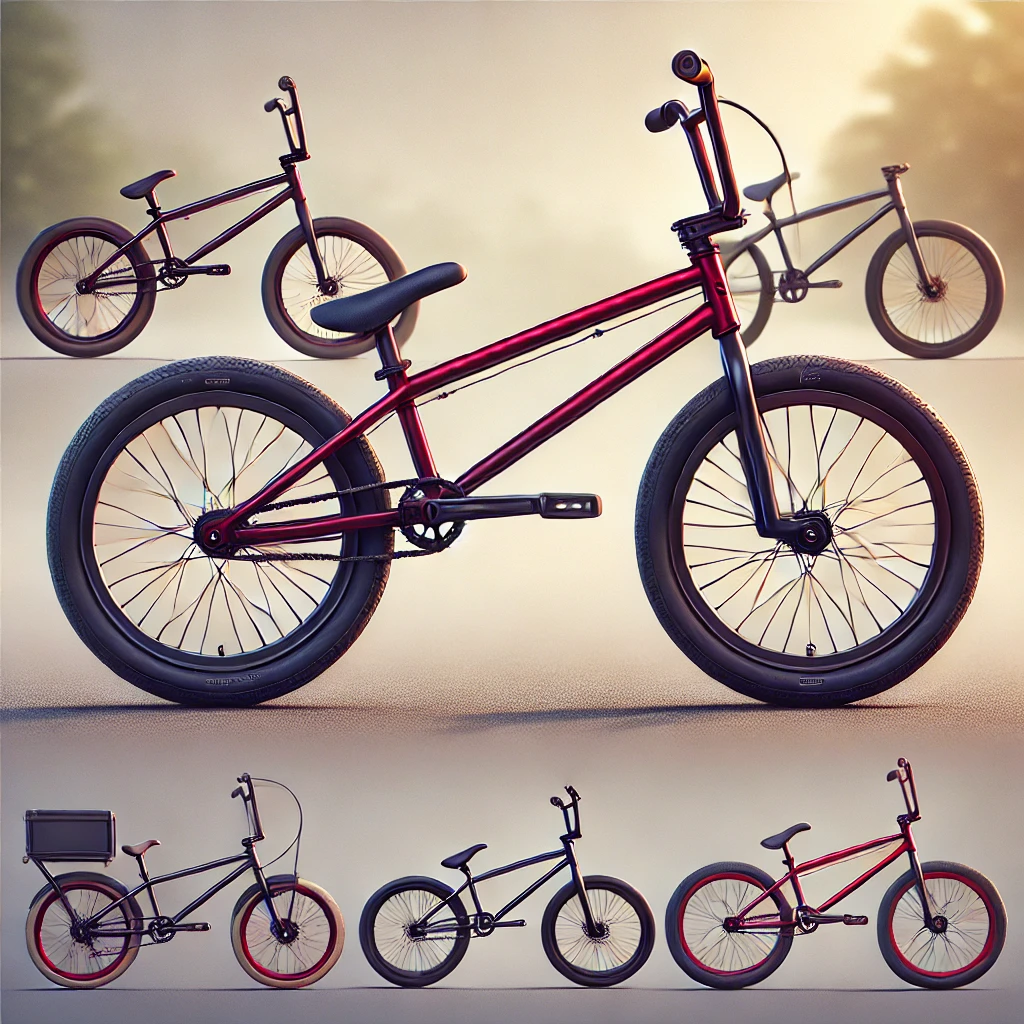
City bikes have thin wheels, are suitable for fast riding on flat roads, and generally have lighter frames. Touring bikes are designed for long-distance rides and usually have the option to attach luggage. They can be a logical choice for children approaching 12-13 years old who want to go on long-distance trips with their family.
Folding Bikes
Folding models are practical, especially for those who live in the city and need to take a bus or metro after riding their bicycle somewhere. Children in the 10-13 age group can use this type of bicycle while going to school or being transported to different activities.
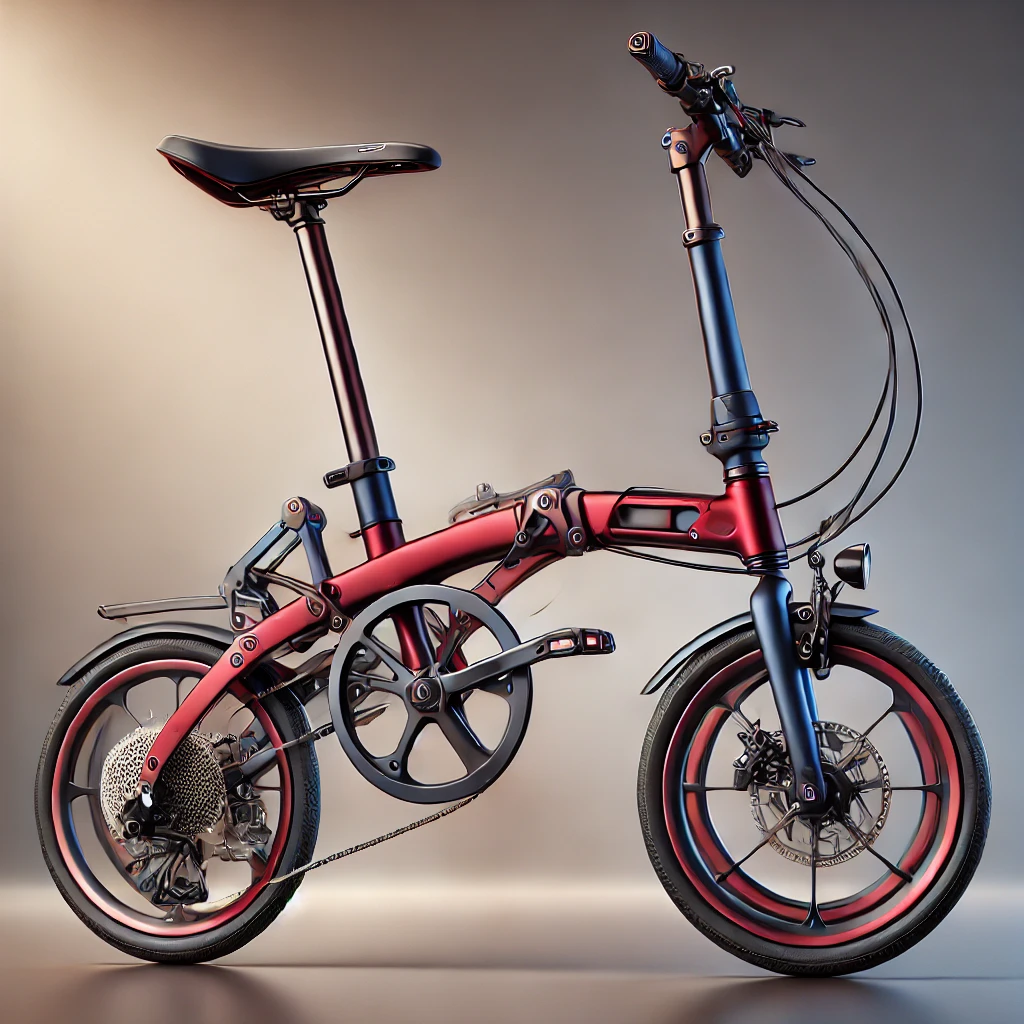
However, the frame structure and dimensions of folding bicycles may not always perfectly fit children’s heights. Also, the quality of the folding mechanism is very important; otherwise, safety risks may arise.
SIZING AND MEASUREMENT GUIDE
The most critical feature of a bicycle is that it fits the child’s height and physique. A bicycle that’s too large, bought with the idea that “they’ll grow into it,” both leads to a lack of confidence and can turn the child away from cycling. Therefore, choosing the right size is actually one of the most important steps.
| Wheel Size (Inch) | Recommended Age Range | Note |
|---|
| 12″ – 14″ | 2 – 4 Years | These are average values; the child’s leg length and body proportions are determinative. |
| 16″ – 18″ | 4 – 7 Years | Some 5-year-old children might be more comfortable with 14″ instead of 16″. |
| 20″ | 7 – 10 Years | The rate of physical development and inseam (inner leg measurement) are important in this transition. |
| 24″ | 10 – 13 Years | Developmental level should be considered; all values are taken as averages. |
Saddle Height and Inseam Measurement
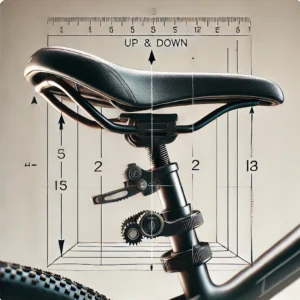
“Inseam” is roughly the inner leg length. The inner leg length shows how comfortably the child can put their foot on the ground while sitting on the saddle. When the child sits on the saddle, their toes should be able to firmly touch the ground. A child who can place their entire foot flat on the ground while using a balance bike should at least be able to touch the ground with their toes when transitioning to pedal models. A saddle that’s too high increases the fear of falling.
Models with adjustable saddle height can be used for a little longer as the child grows. So you can adjust a single bicycle to last at least 1-2 years. Some aluminum frame brands (like Btwin, Strider) offer quite practical adjustment mechanisms in this regard.
Test Ride and Comfort
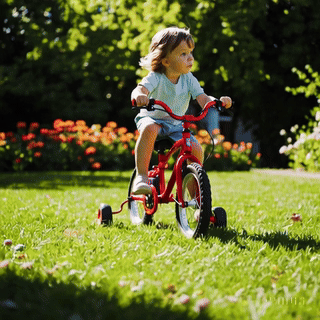
No matter how much you measure and determine, the best result is obtained by doing a test ride in a store or suitable area. Can the child comfortably extend their arms when sitting on the saddle, is it easy for them to squeeze the brakes, are their legs not strained too much? You can see all of these in actual use. Also, if your child doesn’t feel comfortable, even the technically most correct size can dampen their enthusiasm. Therefore, letting them take a small tour and asking for their opinion is a good method.
MATERIAL AND QUALITY
The longevity of a bicycle and its ability to provide a safe and enjoyable riding experience depend on the quality of materials. Thinking “a bicycle is just a bicycle” can lead you to choose a model that breaks down quickly or has low performance. So which materials are more advantageous?
Frame Materials
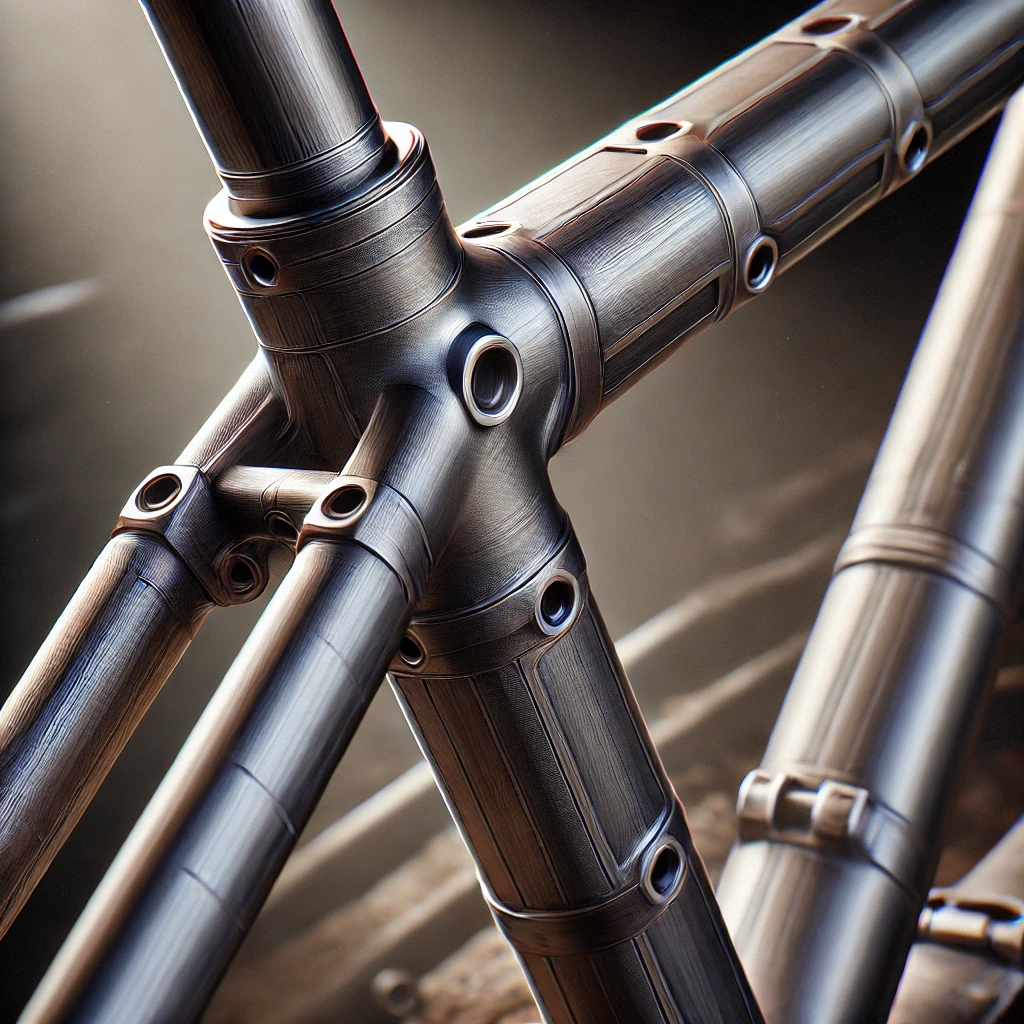
- Steel: Heavier but generally more durable. It’s resistant to impact, but the weight can be a disadvantage, especially for small children.
- Aluminum: Lighter than steel, more resistant to rusting. Prices might be a bit higher compared to steel, but it’s easier to carry and ride.
- Carbon: Although popular in professional bicycles, it’s rarely found in children’s bicycles and is quite expensive.
For small children, an aluminum frame is generally the most practical choice. Both its lightness makes it easier for the child to control the bicycle, and it’s less cumbersome for the family to carry and load onto a vehicle.
Brake, Gear, and Tire Quality
Brakes directly affect the child’s safety, so a simple but sturdy system should be preferred. Easy-to-adjust brakes like V-brakes are common in most children’s bicycles. Disc brakes may be more effective, but they might not always be necessary in children’s bicycles. If the gear mechanism will be used above the age of 7-8, it should be simple and easy to understand. A too complex gear system can confuse children.
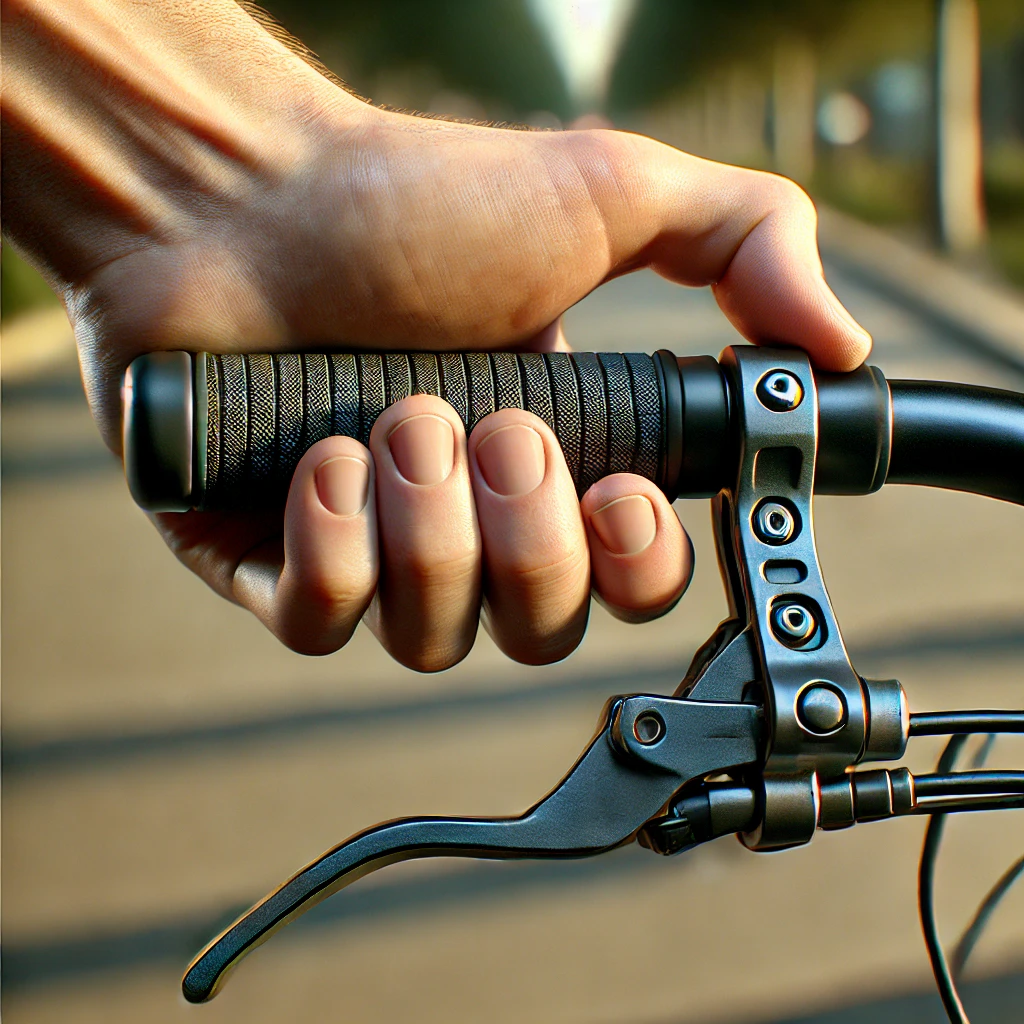
Tire quality is also important for comfort and road grip. Cheap tires can wear out quickly and may be vulnerable to punctures. Semi-tread or full-tread tires should be chosen according to the surface they will be used on. If they are frequently used in the city, on asphalt, thin-tread tires might be faster and more comfortable.
Brands and Price Ranges
There are many brands in the market: Strider, Salcano, Btwin, Kron, Giant, Trek, and many more. Strider is quite popular in balance bikes, while Btwin is known for its accessibility in Decathlon stores. Brands like Giant and Trek stand out in the upper segment bicycles. Prices vary according to brand and material, but an average children’s bicycle usually starts from 1,500 TL and can go up to 5,000 TL (and there are even higher models). Your budget and purpose of use are determinative here. There is naturally a price difference between a bicycle that will only be used to go to the park on weekends and one that is intended for covering long distances.
Ages 2-4:
- BTWIN 100 10 inch Wheel 2-4 Years Red Balance Bike
- Type: Balance Bike
- Price: ₺1,399
- Link: BTWIN 100 10 inch Wheel 2-4 Years Red Balance Bike
- BikeStore: Corelli Fluss 12 inch Wheel –
- Balance Bike –
- ₺4,130
Ages 4-7:
- BTWIN Discover 100 14 inch Wheel 3-5 Years White Children’s Bicycle
- Type: Bicycle with Training Wheels
- Price: ₺7,990
- Link: BTWIN Discover 100 14 inch Wheel 3-5 Years White Children’s Bicycle
Ages 7-10:
- BTWIN Wipe 500 20 inch Wheel 9-14 Years Blue Children’s Bicycle
- Type: Large Diameter Wheel Bicycle
- Price: ₺13,990
- Link: BTWIN Wipe 500 20 inch Wheel 9-14 Years Blue Children’s Bicycle
Ages 10-13:
- ROCKRIDER Expl 500 24 Inch Wheel 9-12 Years Children’s Mountain Bike Black
- Type: Mountain Bike
- Price: ₺14,490
- Link: ROCKRIDER Expl 500 24 Inch Wheel 9-12 Years Children’s Mountain Bike Black
SAFETY EQUIPMENT
Cycling is as risky as it is enjoyable. It’s possible for children to fall, lose balance, or not fully use their reflexes when suddenly faced with an obstacle. That’s why safety equipment is in the “must-have” category, not “optional.”
Helmet Selection and Standards
A helmet is the most basic and important protective equipment. We all know how dangerous skull impacts can be. In many countries, there’s even a requirement for children to wear helmets. When buying a helmet, it’s important to look for safety standards such as CE or CPSC certification. It’s also important that it fits the child’s head perfectly and has an adjustable chin strap. Being too tight can be uncomfortable for the child, while being loose reduces the level of protection.
The color and design of the helmet can also increase motivation when choosing. A helmet with the character your child loves or in bright colors will encourage them to wear a helmet.
- OXELO Children’s Helmet – Skating / Skateboarding / Scooter – Pastel Blue – B100
- Featured property: Provides ideal protection for young riders.
- Price: ₺520
- Link: OXELO Blue Helmet
- OXELO Helmet – Skating / Skateboarding / Scooter – Pink – MF500
- Featured property: Offers comfort and support.
- Price: ₺850
- Link: OXELO Pink Helmet
- OXELO Children’s Helmet – Skating / Skateboarding / Scooter – Coral Color – B100
- Featured property: Provides ideal protection for young riders.
- Price: ₺520
- Link: OXELO Orange Helmet
- OXELO Children’s Helmet – Skating / Skateboarding / Scooter – Coral Color – B100
- Featured property: Provides ideal protection for young riders.
- Price: ₺520
- Link: OXELO Coral Helmet
- 500 Children’s Bicycle Helmet Pink
- Featured property: Designed for children aged 3-10.
- Price: ₺795
- Link: OXELO Pink Bicycle Helmet
Knee Pads, Elbow Pads, and Gloves
Falls can be common, especially with young children who are just learning. Knee pads and elbow pads reduce injuries in the knee and elbow areas. Gloves, on the other hand, both prevent wounds on the palm and make it easier to grip the handlebar. Of course, it might be difficult in practice to wear full equipment every time; but especially during the initial learning periods, if you’re going to a park or an empty area, you can make it a habit to use them.
- OXELO Children’s Skating / Skateboarding / Scooter 3×2 Support Set – Black – PLAY
- Featured property: Provides ideal protection for beginners.
- Price: ₺750
- Link: OXELO Support Set
- OXELO Children’s Skating / Skateboarding / Scooter Support Set – Black – 100
- Featured property: Includes wrist, elbow, and knee protectors.
- Price: ₺520
- Link: OXELO Support Set 100
- BTWIN Children’s Knee Elbow Support Set 3/6 Years Black Standard Size
- Featured property: Prevents minor injuries while learning to ride a bicycle.
- Price: ₺495
- Link: BTWIN Knee Elbow Support Set
Reflector, Light, Bell, Visibility Is Important
Visibility is everything when children are in traffic. Accessories such as a rear reflector, a front light, or a small bell are simple but effective precautions. If you plan to ride at night, measures such as lighting and a reflective vest for the child make a huge difference. Also, teaching children traffic rules at an early age and equipping them with basic knowledge such as pedestrian crossings and the necessity to stop are valuable investments for safe riding.
BUDGET AND QUALITY BALANCE
Nowadays, children grow fast, and your budget for a bicycle might be limited. So the question “Should I buy something cheap, or should I prefer a high-quality model for the long term?” is inevitable.
New or Second-Hand?
Most parents have to change the bicycle the child uses within two-three years. When it becomes too small, it’s possible to sell it on second-hand sales sites or in social media groups. Similarly, you can also find a suitable model from the second-hand market. If you decide to buy second-hand, be sure to check the general condition of the bicycle, its brakes, the wear level of its wheels, and possible deformations in its frame. You can find a well-preserved, barely used bicycle at quite a reasonable price.
Long-Term Use and Adjustable Parts
In some models, it’s possible to adjust the saddle and handlebar in a wide range. This can enable your child to use the same bicycle for one-two more years. For example, in some series of Btwin or Strider, the handlebar and saddle can be raised by almost 10 cm. Thus, your need to buy a new bicycle when they grow a year older decreases.
Cheap or Expensive?
Of course, everyone’s budget is different, but very cheap bicycles may have weak brake systems or frame materials, and this situation can turn into a safety risk. On the other hand, a very expensive bicycle can often turn into an unnecessary investment because as the child’s height grows, it will need to be changed in a few years. Opting for mid-segment, sturdy-material, reliable brand models usually provides a good balance.
COLOR, DESIGN, AND CHILD PSYCHOLOGY
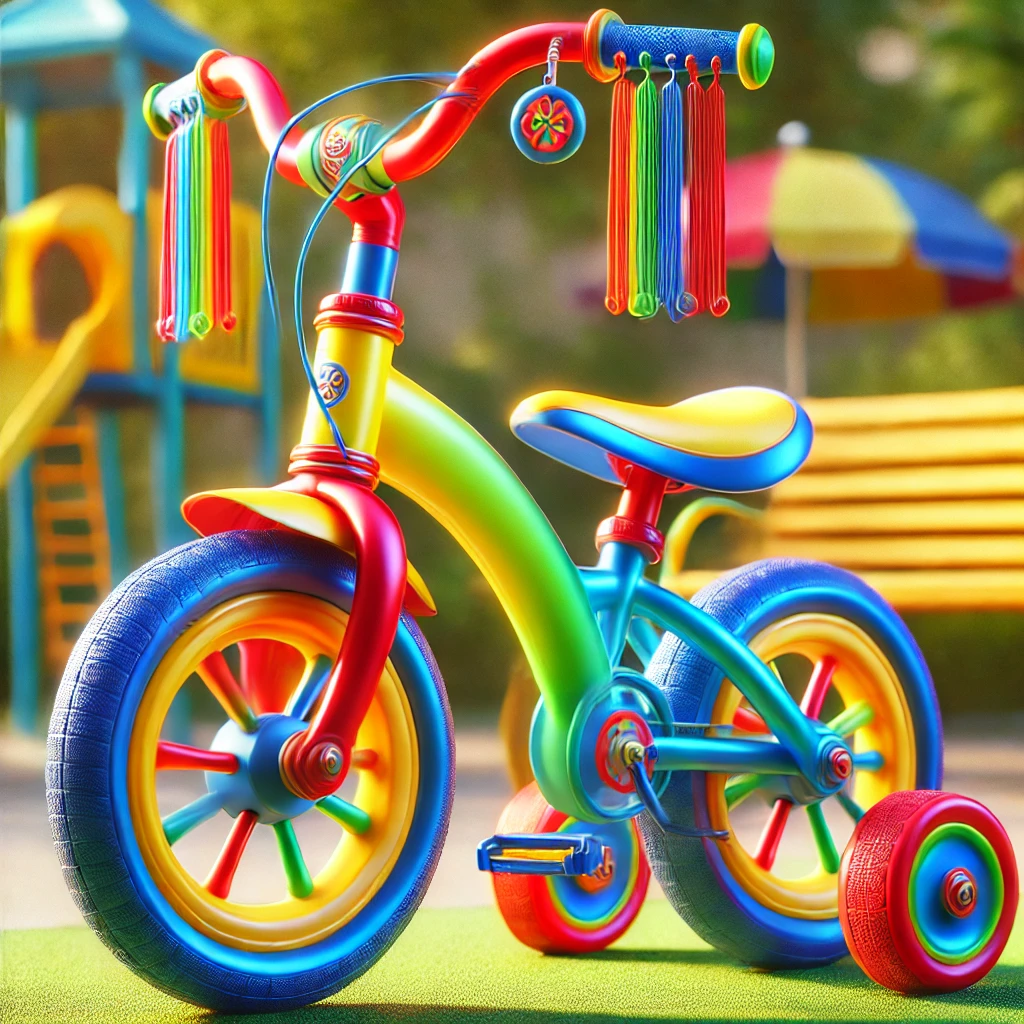
Color and design are truly a great source of motivation for children. When my daughter insisted “It must be pink!” I was saying “Let’s look at the quality first,” but ultimately, I didn’t want to dampen her enthusiasm. The design of the bicycle is part of how the child expresses themselves and maintains their excitement for riding.
Favorite Colors and Characters
Many brands offer designs with cartoon characters or animal figures. For example, it’s possible to see prince/princess-themed bicycles, models with superhero logos, or varieties with teddy bear pictures in their baskets. Choosing a design that your child will be excited about can also increase the frequency of bicycle riding. Because that bicycle is no longer just an ordinary vehicle for them; it can turn into a source of pride they’ll want to show off to their friends.
Accessories and Decorations
Perhaps a separate fun of a bicycle is personalizing it. Basket, bell, stickers, saddle cover, even colorful wheel decorations… The small basket and bright saddle cover we attached to my daughter’s bicycle had doubled her riding pleasure. You can also make your child’s bicycle more fun with similar small touches.
Psychological Effect: Motivation and Self-Confidence
Children enjoy using a bicycle they like. Imagine a child who is happy every time they ride, saying “My bicycle is pink and has flowers”; their motivation will definitely be higher. This positive emotional state has a very positive effect on the learning process and continuity.
TIPS FOR TEACHING BIKE RIDING
Buying a bicycle is only the first step. The real excitement lies in children gaining the skill of pedaling and catching that famous moment of “riding without falling, without help.” So what should parents pay attention to in this process?
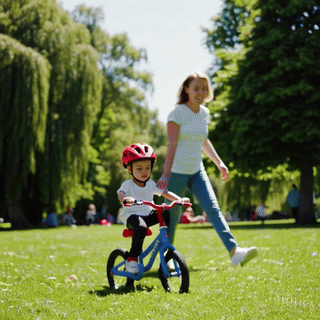
Using Training Wheels
With the classic method, most children start with training wheels. These wheels prevent the child from falling sideways, allowing them to focus on learning to pedal and brake. However, using training wheels for a long time can delay balance development. Some families gradually lower the height adjustment of the training wheels, slowly encouraging the child to balance. Still, children who have used balance bikes recently can make the transition without much need for support.
Starting with a Balance Bike
If the child’s age is suitable (2-4 years range), a balance bike can be a great start. Because they first learn to balance, when pedals are added, the body has already solved the question of “How to stay upright?” This method also reduces the fear of falling. The child proceeds with the thought, “I can balance, I just need to get used to the pedal.”
Family Support and Step-by-Step Teaching
Holding the child from behind the bicycle to push them a little or helping them balance is still one of the most used methods. During this time, it’s very important to constantly encourage the child by saying “Don’t be afraid, I’m here” and frequently using sentences full of praise. Even if they fall, the approach “No problem, let’s try again” keeps the child’s morale high. Choosing a calm and empty area during the initial learning periods reduces both the child’s and your stress.
Fear and Falling Situations
The fear of “What if I fall?” can exist in the child as well as sometimes excessively in the parent. When I first saw my daughter unsupported on two wheels, I also felt a mix of excitement and fear. Small falls are almost inevitable; what’s important is having the equipment that will prevent injury. Also, explaining to children that falling is a normal part of the process, giving examples like “Look, I fell at your age too, but then I learned,” helps them overcome this fear.
BICYCLE MAINTENANCE AND BASIC REPAIR
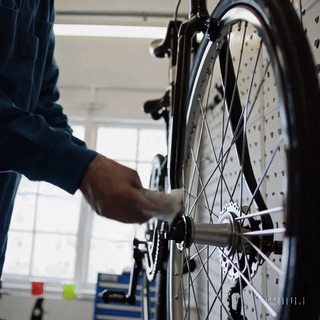
After buying a bicycle, it’s important not to neglect its maintenance. Although children generally don’t want to take much responsibility, by teaching them small maintenance routines, you can give them both a sense of ownership and a habit of being organized.
Regular Chain Lubrication and Tire Check
Drying or rusting of the chain reduces riding performance and sometimes makes noise. Lubricating the chain with a suitable oil spray at certain intervals (for example, once a month) works. Also, it’s necessary to regularly check the air pressure of the tires. A very flat tire both makes riding difficult and causes the tires to deform quickly.
Brake Adjustment, Saddle Height, Handlebar Check
So that your child’s bicycle can keep up with their growth rate, review the saddle height from time to time. Test whether the brakes work efficiently, whether the wheels stop completely when the brake lever is pressed. It’s important to make sure the handlebar isn’t loose. You can easily make these adjustments with simple tools (Allen key set, etc.) at home.
Involving the Child
Saying “Come on, let’s do your bicycle maintenance day” at certain intervals and doing these tasks together with your child gives them a sense of responsibility and ownership. Measuring the tire air together, checking “Has it decreased, or is it good?” raising the saddle a little – such small tasks can turn into a fun activity for the child. The awareness that “My bicycle is my responsibility” can be carried forward to bigger things in the future.
BICYCLE-RELATED ACTIVITIES AND ORGANIZATIONS
While the joy of cycling sometimes comes from riding alone, activities with family or friends can be much more enjoyable. A few ideas always come in handy for this.
Family Tours and Nature Trips
Going to nearby bicycle paths on weekends, taking a small nature tour with your child is a great opportunity. You both do physical activity and spend quality time together. The child examining their surroundings, discovering new roads, sometimes taking a small picnic break… All of these leave very valuable memories that strengthen family bonds.
School Activities and Bicycle Camps
Some schools organize events like “bicycle day.” Children both have fun and are informed about traffic rules and safety equipment. There are also bicycle camps that cater to older age groups. Here, basic maintenance, repair, and riding techniques are taught. You can follow such organizations on social media or in local forums.
Communities and Sharing
Many parent communities on social media organize bicycle events or share their experiences. There are many groups where you can find answers to questions like “Which is the best helmet brand?”, “My child is mixing up the gears, what can I do?” Sharing your experiences on such platforms can be beneficial in terms of helping other families and also learning new tips yourself.
COMMON MISTAKES AND WARNINGS
Mistakes that may seem small but could have big consequences can sometimes be made in bicycle selection and use. Here are the most common ones:
- Wrong Size Selection: Buying a large bicycle just so they can use it for a long time breaks the child’s confidence and prevents them from developing their riding skills.
- Deciding Solely Based on Appearance: Buying a model with weak functionality just because it’s cool or very colorful can lead to regret later.
- Skipping Safety Equipment: Saying “They’re going a short distance, they don’t need to wear a helmet” is wrong. Accidents and falls can happen anytime, anywhere.
- Forcing the Child or Not Encouraging at All: Some parents force their child to ride a bicycle even if they don’t want to. This can turn the bicycle into a source of stress. On the other hand, if the child is willing but the parent doesn’t care, the learning process can be hampered.
- Not Storing the Bicycle in Suitable Conditions: A bicycle exposed to rain and sun in an open area quickly rusts and becomes deformed. Using a cover or a closed area is important.
CONCLUSION AND SUMMARY
Choosing the right bicycle for your child is actually a more detailed process than thought. It’s necessary to determine the right model according to age and size, consider its material, brake system, number of gears, and even its color and design. Safety equipment should never be neglected; precautions such as a helmet, reflector, and if possible, knee and elbow pads should always be at hand. You can navigate between both new and second-hand options and make your budget plan. But remember, the most expensive is not always the best; what’s important is finding a model that is suitable for your child, that motivates them, and that is safe.
At the same time, a bicycle is more than just a vehicle; it’s an activity that contributes to the child’s physical and emotional development. Looking at my personal memories, I can’t forget the excitement that the first bicycle my father bought me gave me, the joy of racing with friends in the neighborhood. Now seeing similar emotions in my daughter takes me back to those days. Perhaps the most valuable aspect is this: Bicycle is a companion that enriches family sharing and builds self-confidence. I believe that in the future, it will maintain its place in our lives as a symbol of environmentally friendly transportation and healthy living.
I hope this guide has somewhat cleared up the question marks in your mind. I wish you and your child enjoyable, healthy, and safe rides. One of the best periods to enjoy cycling is coming. Remember, perhaps in a little while, it won’t be you, but your child who will start giving you tips about cycling and challenging you by saying, “Come on, catch up with me if you can!” When that day comes, you will say, “I’m glad we embarked on this journey.” I wish you enjoyable pedaling from now on!

